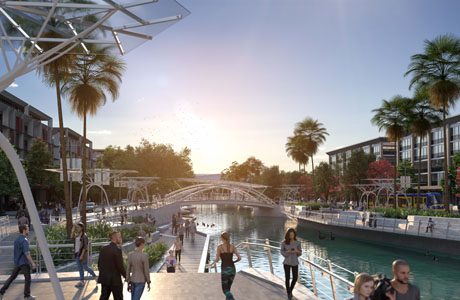
Australia is to see its first underground waste collection system installed in Queensland. The work is part of a major redevelopment programme that will deliver some of the nation’s most sustainable building design and create over 30,000 jobs by 2040, according to vacuum waste collection expert Envac.
The firm, which claims to have invented underground automated waste collection in the 1960s, will handle the waste of over 2,000 apartments, retail outlets and commercial spaces in Maroochydore, in the Sunshine Coast municipality.
Replacing traditional bins will be Envac’s waste inlets, which connect to an underground pipe network and transport waste using airflow to a central waste collection station. The system will collect three waste streams including general, organic and recyclable waste.
Sunshine Coast Mayor Mark Jamieson has said that the waste system will be installed in stages over the coming decade and make the 53-hectare Maroochydore City Centre one of the cleanest and greenest cities in the country.
He believed the deployment of this technology “means city workers and residents will never have to walk past rows of wheelie bins or be woken early by noisy garbage trucks” in the Maroochydore City Centre. He said: “Common aspects of waste collection such as odours and vermin will be avoided, and the costs of daily street cleaning will be reduced. As well as making our city heart more attractive, this technology has a track record of increasing recycling rates, so our natural environment will benefit too.”
Envac is one of many smart city innovations that are intended to position Maroochydore as a flagship site for sustainable building design. Other technologies will include smart lighting, real time traffic management systems and high-speed fibre connections. The waste system will cost $20 million, 50 per cent of which will be fully recovered from occupants of the development over the life of the system and 50 per cent by the developer, said Envac.
John Knaggs, CEO at SunCentral Maroochydore, which will oversee the design and delivery of the new city centre, added: “Envac’s technology can be installed because we are building on an undeveloped, greenfield site within an existing urban area”. This situation has also made it possible for his group to undertake to build “a high-speed fibre optic network into the city’s very foundations, which will enable us to provide ‘smart’ signage, free Wi-Fi hotspots, real-time transport information, movement sensors and smart lighting”. He concluded: “Our city centre will be an exciting place to live, work and visit while setting a new standard for urban design in Australia.”






